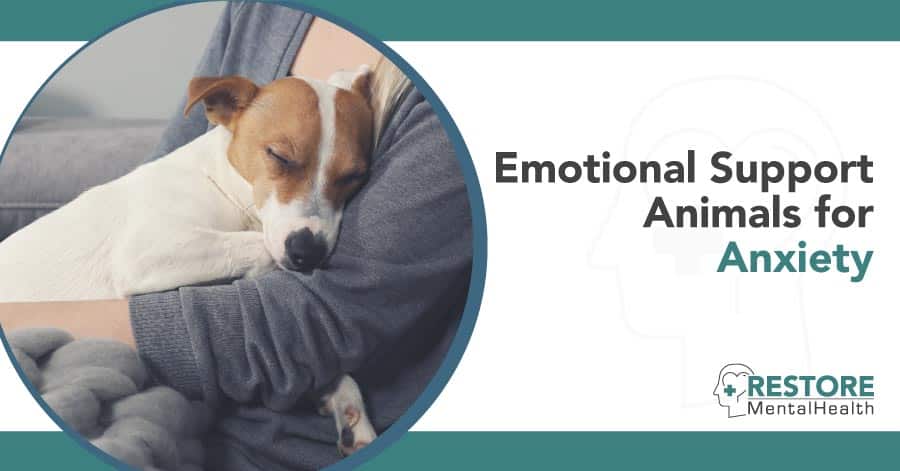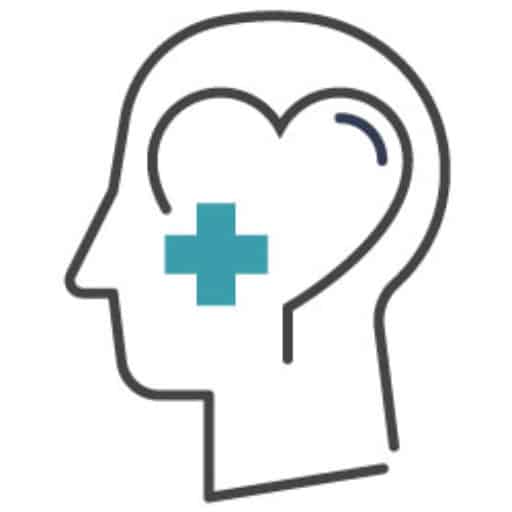Having emotional support dogs for anxiety has become increasingly popular in recent years, and it’s easy to understand why. With more than 31% of Americans living with some degree of anxiety, people will welcome something that promises to reduce stress and make life easier.
But how effective are emotional support animals (ESAs)? Beyond the companionship most people get from their pets, do these support animals actually do anything for people with anxiety? Before you get an emotional support animal for anxiety, find out how this designation works and why you might want an animal with this training and certification. Is an emotional support dog for anxiety right for you — or perhaps another kind of animal?
What Are Emotional Support Dogs for Anxiety?
Service animals are specially trained pets certified under Title II and Title III of the Americans with Disabilities Act (ADA) as necessary for a person with a disability. The best-known type of service animal is a guide dog, which helps its visually impaired owner navigate public environments. Once certified, a helper animal can go anywhere the owner goes, including spaces where pets are not usually allowed, such as airplanes and restaurants.
People with emotional disabilities are generally able to bring their ESAs with them wherever they go, though the regulations for support animals are not as strong as for service dogs. ESAs are not service animals. Service animals are defined as dogs with specialized disability- and handler-specific training. Many states have legislation that clarifies the differences between service dogs and emotional support animals, and the definition varies from state to state.
What Can ESAs Do to Help Anxiety?
A significant benefit of emotional support dogs for anxiety is the calming effect they have on their human companions. People with anxiety may have unexpected attacks in public places and crowds. Having an emotional support animal can reduce the likelihood of an anxiety attack starting, lessen its severity and help the person recover faster. Often the mere presence of an ESA for anxiety is enough to reduce or prevent the attack.
Most people’s first choice for a service animal is a dog. Dogs are good companions and easy to train, which makes them an attractive choice for people who may need their pet to perform specific roles during an emergency. Dogs tend to be highly perceptive, and they may be able to notice the signs of an emotional episode, an asthma attack or other physical issue even before the person having it realizes what’s happening. A trained emotional support dog for anxiety might be able to communicate to its owner that an attack, seizure or other emergency is beginning, signaling the need to find a safe place or to lie down to prevent falling.
You’re not limited to a dog for an ESA, however. Any animal that helps you manage a psychiatric disorder, such as anxiety, is potentially a support animal. A good guide on how the law treats pets that help with anxiety, as opposed to service dogs, can be seen in the current Air Carrier Access Act (ACCA). The ACCA defines the U.S. policy toward carrying animals aboard airplanes. Under this act, all airlines offering service within the United States must allow unfettered access to the cabin for any registered service dog, such as a guide dog. ESAs are subject to reasonable accommodation. However, ESAs are not service dogs and may not be allowed to travel with their owners in the same way.
Any place that usually restricts animal access, such as an airline, a restaurant or a hospital, may require a certificate from a licensed mental health practitioner attesting that the owner needs the animal for anxiety support. Airlines in particular may have additional requirements such as proof of vaccinations and other health obligations before an ESA is allowed on board. Animals other than dogs, such as emotional support cats, pigs, miniature horses, ferrets, rodents, spiders or anything else, are subject to approval in advance. As a rule, animals will be accepted or declined on an individual basis, depending on size, weight, potential safety or health hazards and the disruption the animal is likely to cause. Foreign air carriers aren’t required to allow any animals other than service dogs into the cabin.
Is an ESA Right for You?
A pet is right for you if you want a pet and can take care of it. If you’re looking for an ESA for therapeutic and emotional support, it’s important to choose an animal you like. Make sure you can take care of the animal and it doesn’t increase your anxiety. If you find an animal, even an exotic one like a scorpion or pet snail, that seems to help, it may be a good ESA choice if it helps you calm your anxiety.
If you like the privileges given to support animals, you’ll need to think about the general public when deciding what type of animal your ESA should be. While society has adapted to the presence of service dogs and anxiety support dogs, few venues are legally required to recognize your emotional support iguana or hissing cockroach. Ideally, your ESA won’t cause a negative reaction in public that would require you to provide legal documentation.
How to Get a Pet Certified as an ESA
While the federal government defines service animals under the ADA, the regulation of emotional support animals is left to each state. Some states are very strict about what animals are eligible for certification, while others are more relaxed. California, for example, requires owners to carry a written recommendation from either a doctor or a therapist that documents their therapeutic need for such an animal.
Whatever animal you choose to be your ESA, remember that it’s good to have pets. Emotional support dogs for anxiety aren’t the final cure, and you may need more help to manage your mental health issues. Restore helps people with anxiety adjust to a better life and manage their condition with the aid of expert, compassionate care staff. Call us today at (877) 594-3566 to schedule an appointment.



